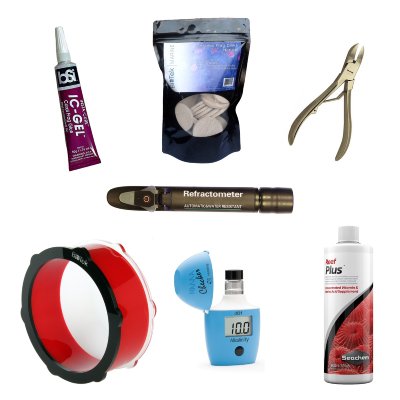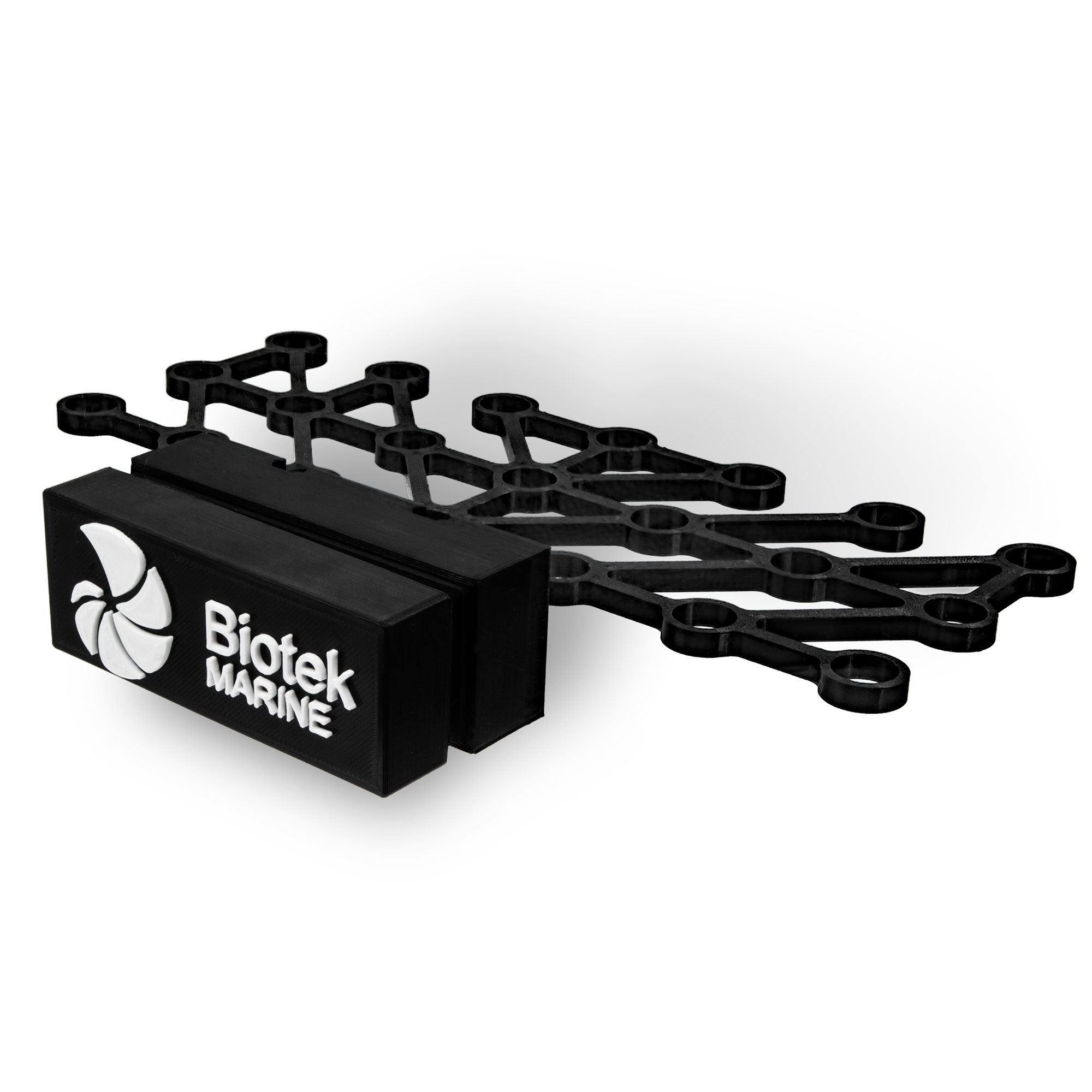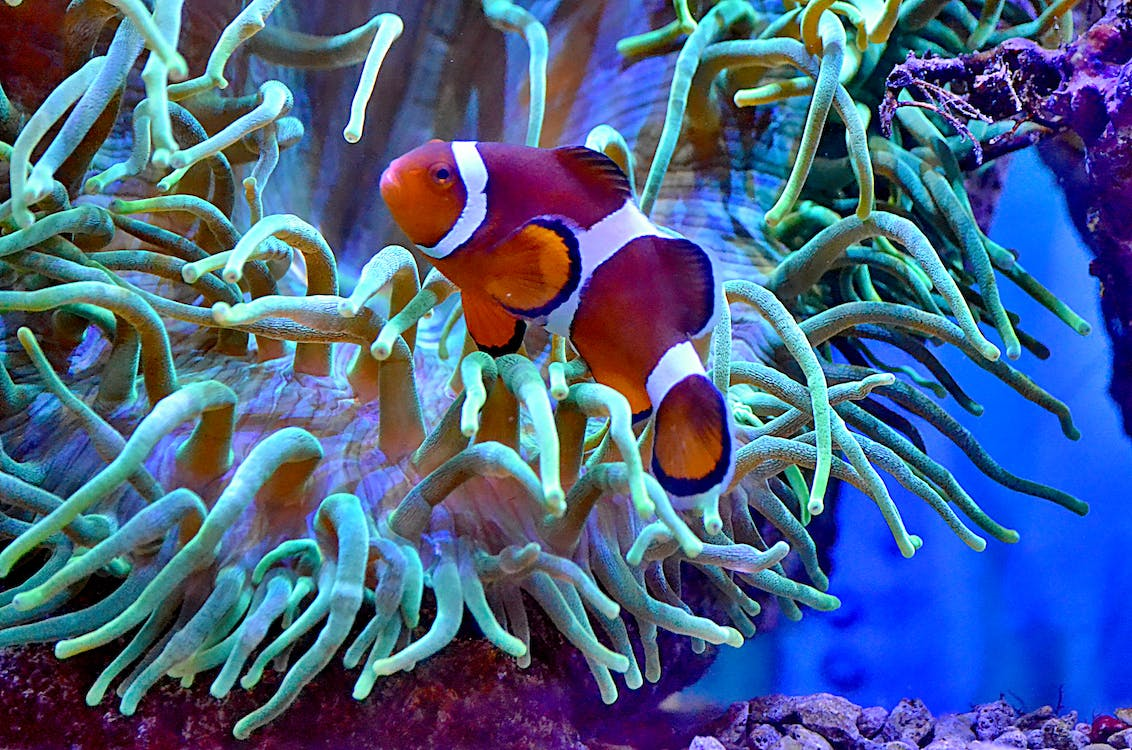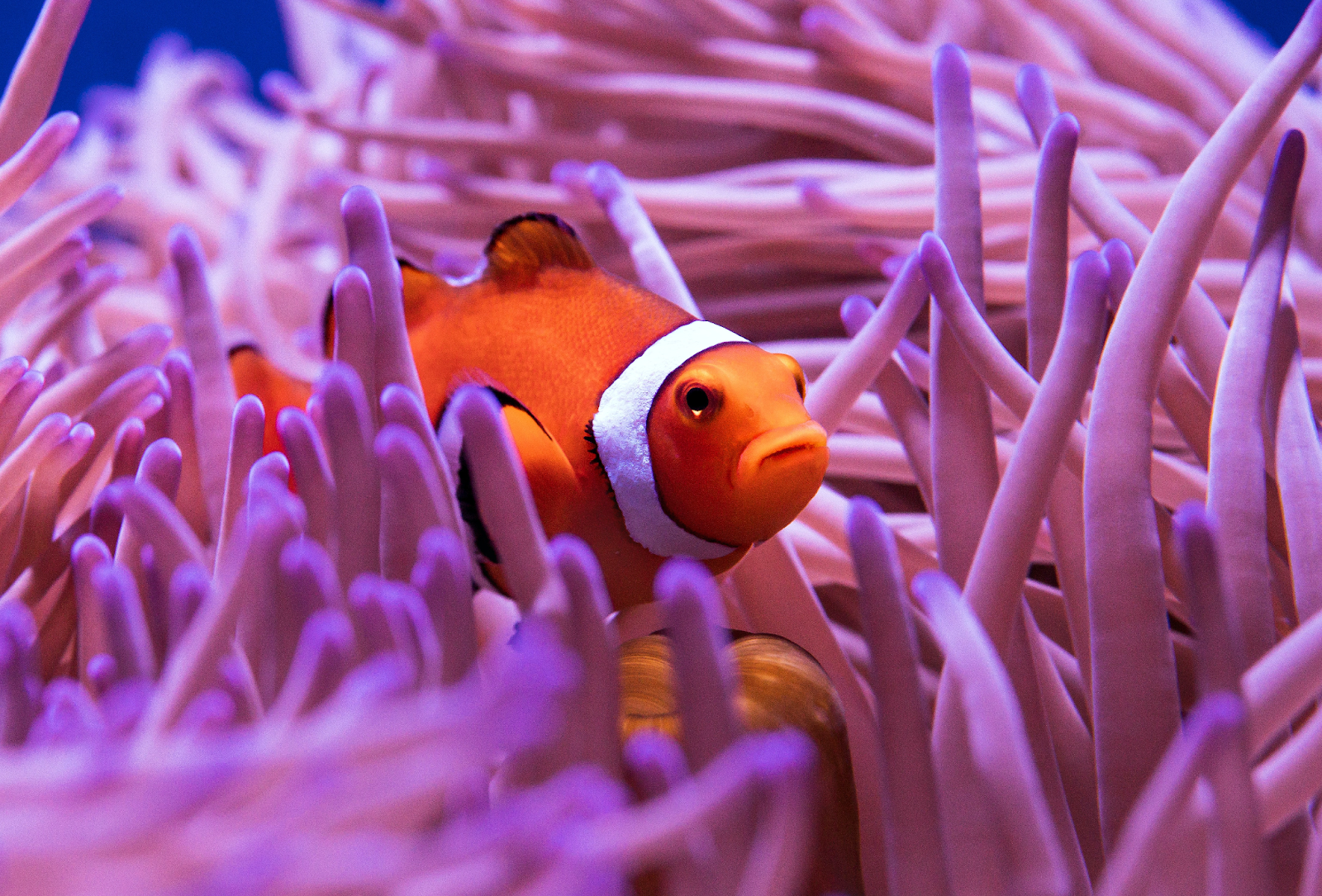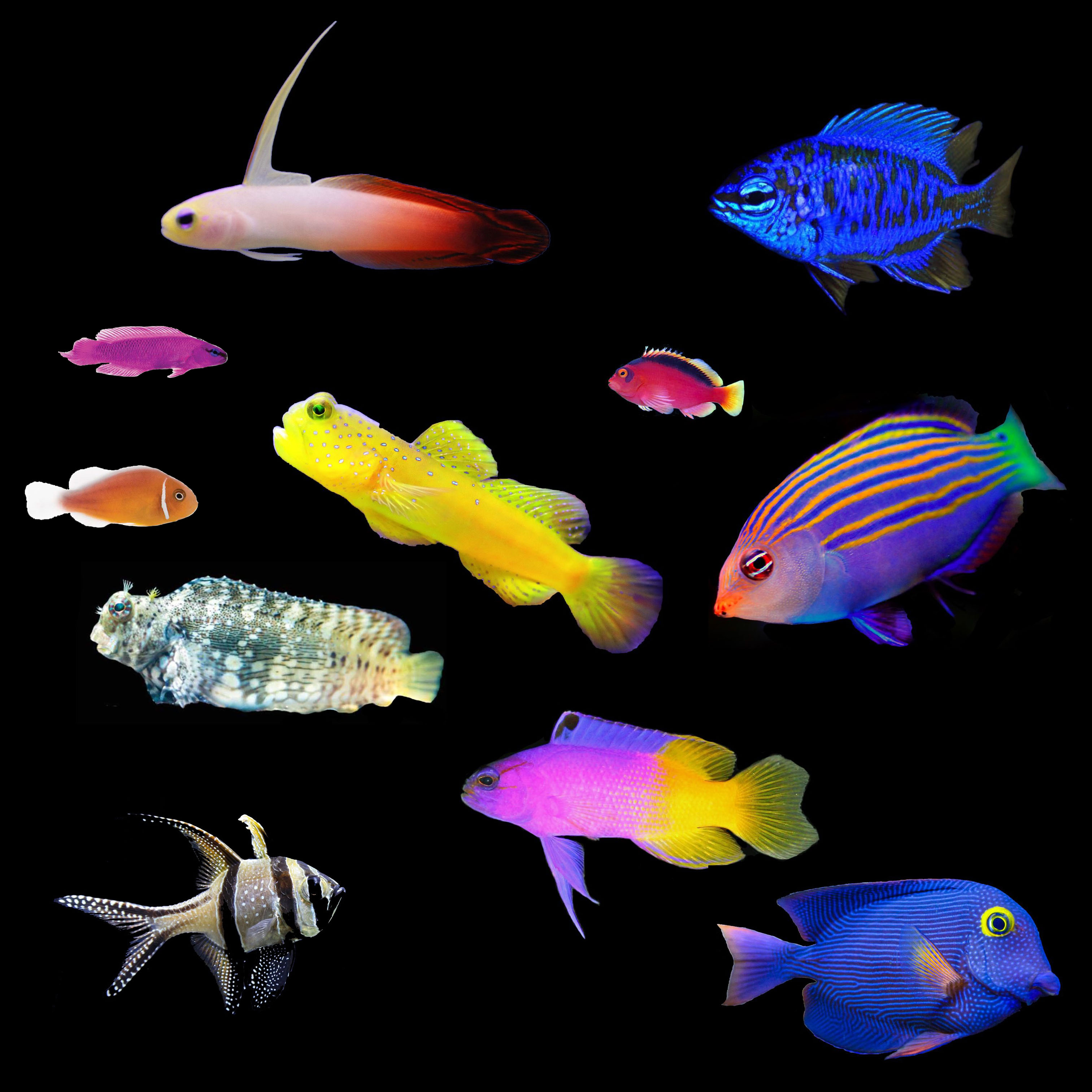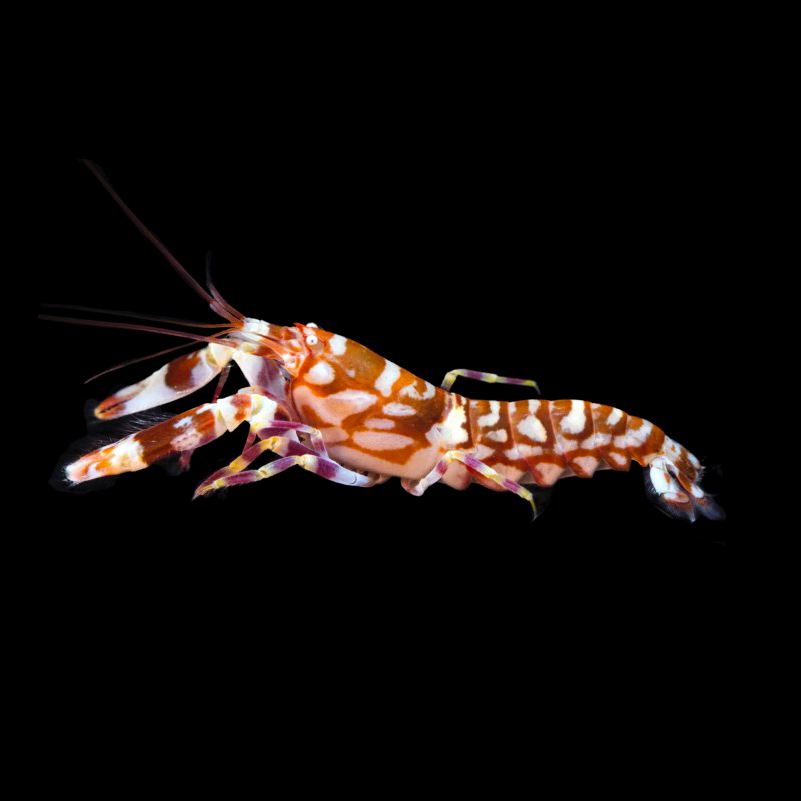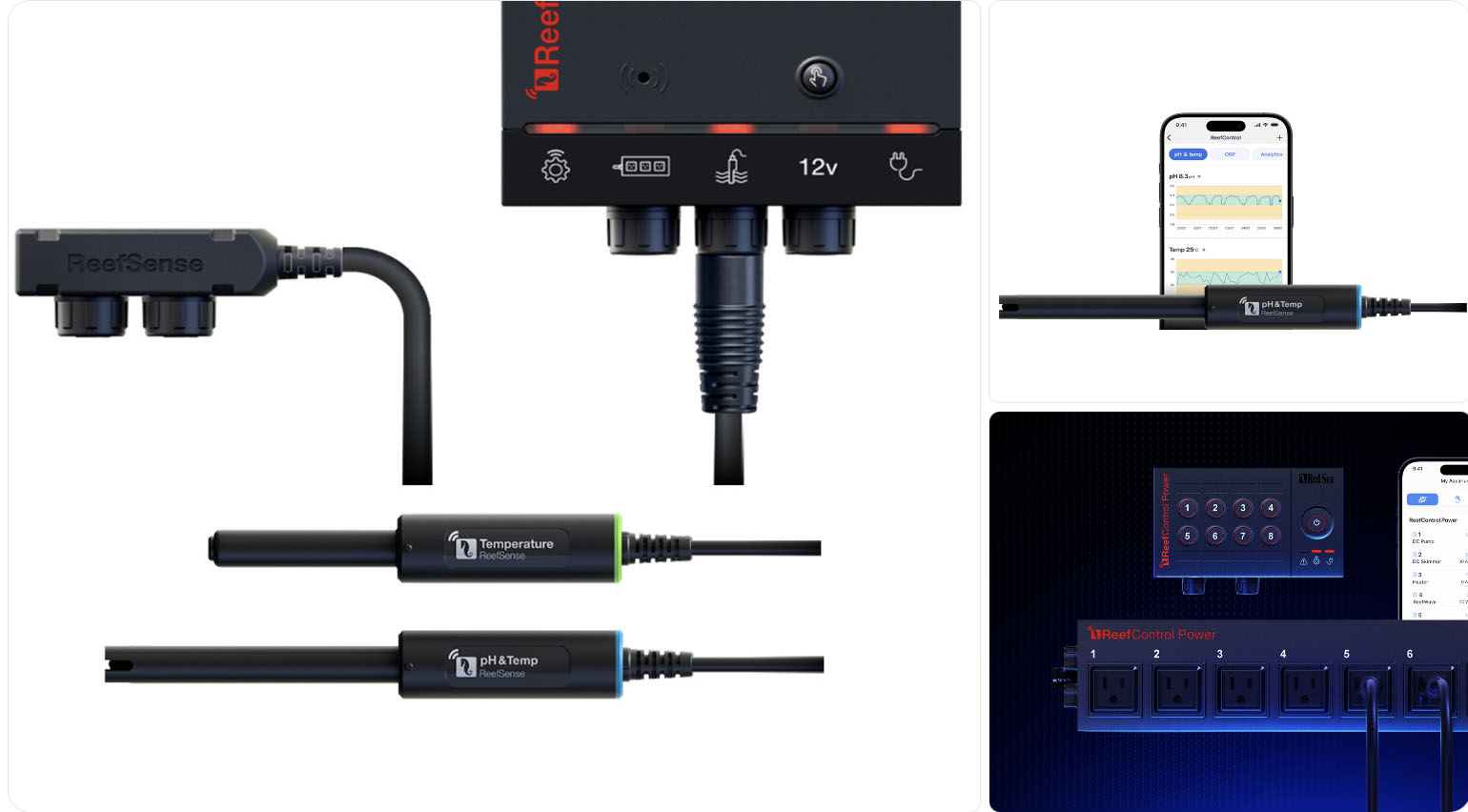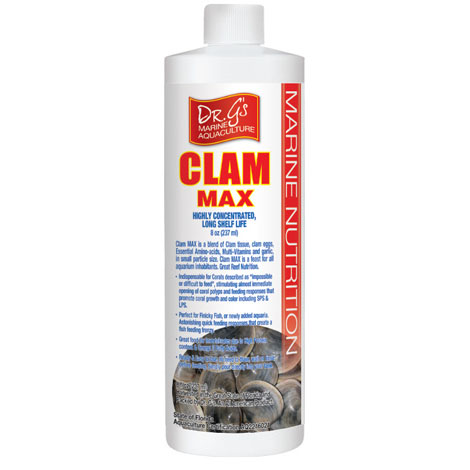We use cookies to make your experience better. To comply with the new e-Privacy directive, we need to ask for your consent to set the cookies. Learn more.
Candy Stripe Pistol Shrimp (Alpheus sp.)
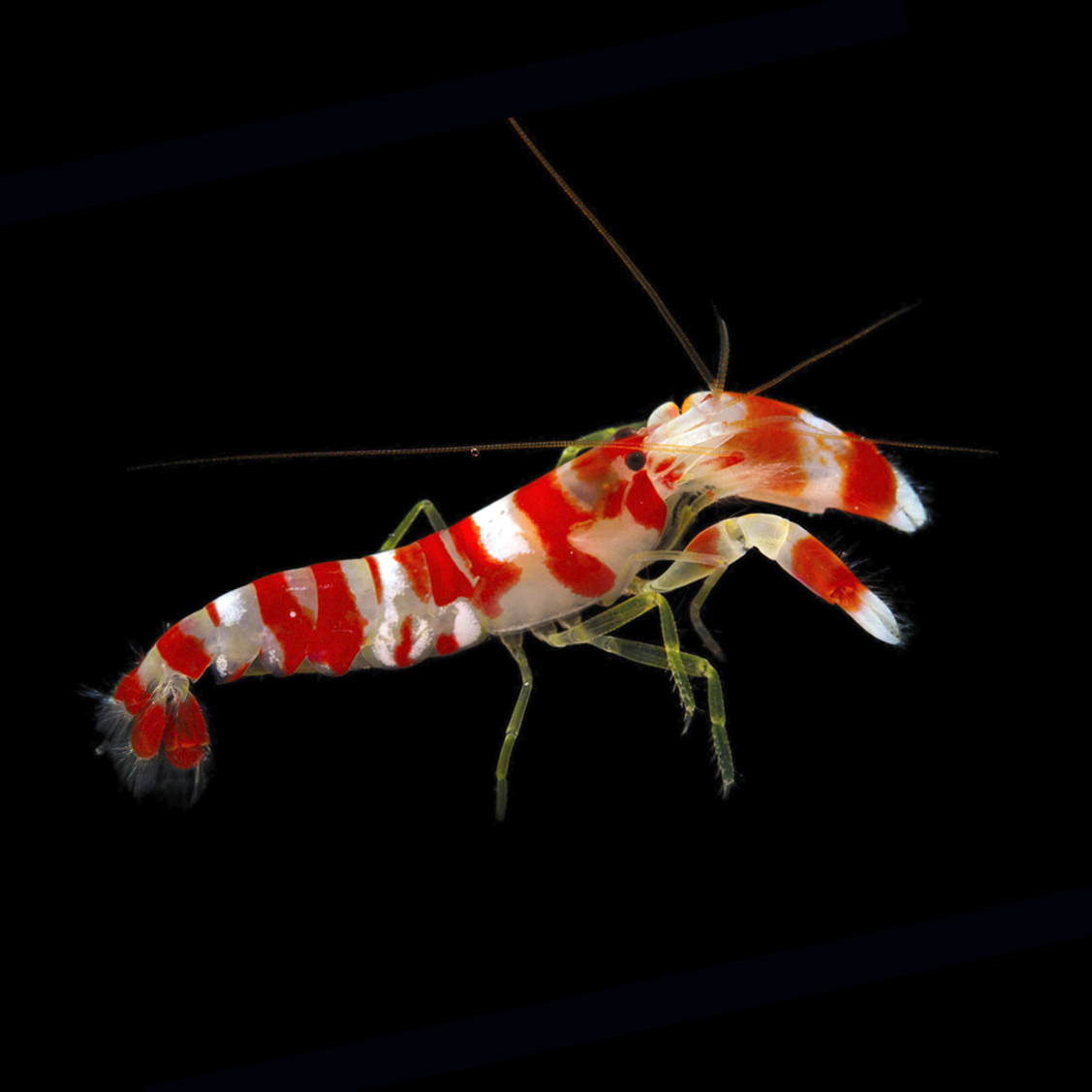
The Candy Stripe Pistol Shrimp, scientifically known as Alpheus sp., is a remarkable species within the Alpheidae family, renowned for its vibrant coloration and unique behavior. This crustacean is a favorite among marine aquarists and researchers alike due to its striking appearance and the fascinating biological mechanisms it exhibits.
Morphology and Appearance
The Candy Stripe Pistol Shrimp is easily identifiable by its vivid coloration. Its body is adorned with alternating bands of bright red and white, resembling a candy cane, which provides its common name. These contrasting stripes extend from the rostrum to the telson, making the shrimp highly conspicuous against the sandy and coral reef environments it typically inhabits.
Adult specimens can reach up to 5 centimeters in length. The chelipeds (claws) are particularly noteworthy; one is significantly larger than the other and is specialized for generating powerful snapping sounds. This major claw is often as long as half the shrimp’s body length and is a key tool in both defense and communication.
Behavior and Ecology
The Candy Stripe Pistol Shrimp exhibits a fascinating behavior known as "snapping," which is facilitated by its asymmetrical claws. The larger claw is capable of producing a loud, snapping sound by rapidly closing and releasing a specialized structure within the claw. This snap generates a cavitation bubble that collapses with a shockwave, stunning prey and deterring predators. This unique adaptation not only provides an efficient means of capturing prey but also serves as a mechanism for defense and territorial disputes.
In addition to its snapping ability, the Candy Stripe Pistol Shrimp often engages in symbiotic relationships with various gobies. The shrimp and goby form a mutualistic bond where the shrimp maintains and digs burrows that both species inhabit, while the goby acts as a lookout for predators. This partnership enhances the survival prospects of both organisms in their shared habitat.
Habitat and Distribution
Alpheus species, including the Candy Stripe Pistol Shrimp, are typically found in shallow tropical and subtropical waters. They are commonly associated with coral reefs, sandy substrates, and seagrass beds, where they can excavate their intricate burrow systems. These shrimp are distributed across the Indo-Pacific region, with populations recorded from the Red Sea to the Central Pacific.
Reproduction and Lifespan
Reproductive strategies in the Candy Stripe Pistol Shrimp follow the general pattern observed in decapod crustaceans. Females carry fertilized eggs attached to their pleopods (swimming legs) until they hatch into planktonic larvae. These larvae undergo several developmental stages before settling onto the substrate and metamorphosing into juvenile shrimp.
The lifespan of Alpheus species in the wild is not well-documented but is estimated to be several years, with variations depending on environmental conditions and predation pressures.
Importance in Marine Ecosystems
The Candy Stripe Pistol Shrimp plays a crucial role in its ecosystem. Its burrowing activities contribute to the aeration of the substrate, promoting nutrient cycling and supporting the overall health of the benthic community. The shrimp's symbiotic relationship with gobies also exemplifies the complex interdependencies that characterize coral reef ecosystems.
Conclusion
The Candy Stripe Pistol Shrimp, Alpheus sp., is a remarkable example of the diverse and intricate life forms inhabiting marine ecosystems. Its vibrant coloration, unique snapping behavior, and symbiotic relationships make it a subject of interest for both scientific research and marine aquarists. As with many marine species, understanding and preserving their natural habitats is essential for maintaining the biodiversity and health of our oceanic environments.




